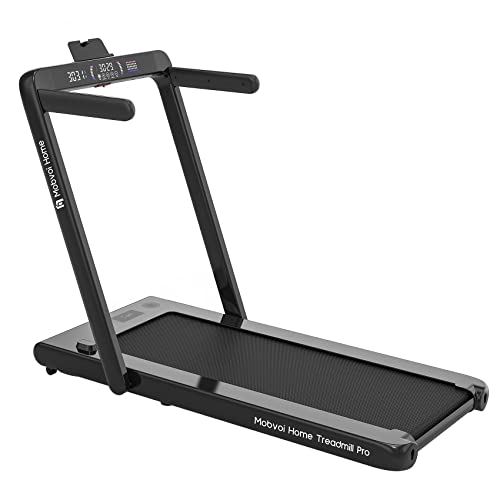Gym Treadmill Tips From The Top In The Industry

Treadmills: A Comprehensive Guide to Understanding Their Functionality, Benefits, and Appropriate Selection
Introduction
Treadmills have become a staple in modern-day physical fitness regimens, both in homes and health clubs worldwide. They provide a hassle-free and effective method to keep cardiovascular health, increase endurance, and help in weight management. This article checks out the different kinds of treadmills, their advantages, features to think about when buying, and some FAQs to guide users in making informed decisions.
Kinds of Treadmills
When it concerns selecting a treadmill, it is vital to understand the different types offered in the market. Here are the primary classifications:
1. Manual Treadmills
- Mechanism: These treadmills have a basic style and rely on the user's efforts to move the belt.
- Pros: More inexpensive, quieter operation, no electricity required.
- Cons: Limited functions, might not provide the exact same range of workout strength.
2. Motorized Treadmills
- Mechanism: Powered by a motor that drives the belt, enabling users to stroll or run at a set speed.
- Pros: Greater variety of speeds and slopes, equipped with many functions such as heart rate monitors and exercise programs.
- Cons: More costly and may need more maintenance.
3. Folding Treadmills
- Mechanism: Designed for those with limited space, these treadmills can be folded for easy storage.
- Pros: Space-saving, frequently motorized, flexible functions.
- Cons: May be less resilient than non-folding models.
4. Business Treadmills
- Mechanism: High-quality machines designed for use in health clubs and physical fitness centers.
- Pros: Built to stand up to heavy usage, advanced functions, frequently include guarantees.
- Cons: Pricey and not ideal for home usage due to size.
5. Curved Treadmills
- System: A distinct design that allows users to propel the belt using their own energy.
- Pros: Offers a more natural running experience, promotes better running kind.
- Cons: More pricey and can be noisier.
| Treadmill Type | Pros | Cons |
|---|---|---|
| Handbook | Affordable, no electrical energy needed | Minimal functions |
| Motorized | Range of speeds, advanced functions | Maintenance required |
| Folding | Space-saving, frequently motorized | May lack toughness |
| Business | Constructed to last, professional-grade functions | Expensive |
| Curved | Natural running experience, promotes excellent form | Higher rate |
Benefits of Using Treadmills
Treadmills offer many advantages that can add to one's overall health and wellness objectives. A few of these advantages include:
- Convenient Workouts: Treadmills allow users to exercise indoors despite climate condition.
- Cardiovascular Health: Regular use can enhance heart health by increasing stamina and promoting healthy circulation.
- Weight Management: Effective for burning calories, which assists in weight-loss and management.
- Personalized Workouts: Users can control speed, slope, and period to develop tailored workout experiences.
- Security: Treadmills offer a foreseeable surface, reducing the threat of falls compared to outside running.
- Multifunctional: Many treadmills come with functions like heart rate screens, workout programs, and even home entertainment systems.
Picking the Right Treadmill
When picking a treadmill, prospective purchasers should think about several essential elements:
Features to Consider:
- Motor Power: Typically measured in horse power (HP), a motor strength of at least 2.5 HP is suggested for severe runners.
- Belt Size: A longer and wider belt accommodates various stride lengths, offering comfort during exercises.
- Incline Settings: Adjustable incline functions simulate outdoor hill running and can increase workout strength.
- Weight Capacity: Ensure the treadmill can support the user's weight for security and durability.
- Console Features: Look for user-friendly dashboards, exercise programs, and Bluetooth compatibility for streaming music or other functions.
Budget Considerations
- Under ₤ 500: Entry-level manual treadmills ideal for casual walkers.
- ₤ 500 - ₤ 1,500: Mid-range motorized treadmills that provide more features and much better durability.
- ₤ 1,500 - ₤ 3,000: High-end models with sophisticated innovation, bigger motors, and longer warranties.
- Over ₤ 3,000: Commercial-grade treadmills ideal for regular use in fitness centers or training centers.
Frequently Asked Questions (FAQs)
1. How typically should I use a treadmill?
It is recommended to use a treadmill a minimum of 3 to 5 times a week, including various strength levels for best results.
2. Can I drop weight by utilizing a treadmill?
Yes, constant use of a treadmill can add to weight loss, particularly when integrated with a balanced diet and strength training.
3. What is the very best speed to stroll on a treadmill for newbies?
A speed of 3 to 4 miles per hour is a suitable variety for novices. It's important to begin slow and gradually increase rate as comfort and endurance improve.
4. Do I need to utilize a treadmill if I currently run outdoors?
Using a treadmill can supply extra benefits, such as regulated environments and varied workouts (incline, intervals) that are not constantly possible outdoors.
5. How do I maintain my treadmill?
Routine maintenance includes oiling the belt, cleaning the deck and console, and examining the motor for ideal efficiency.
Treadmills are necessary tools for those seeking to boost their physical fitness levels in a controlled and practical manner. With different types offered, comprehending their functions and advantages is important for making an informed purchase. By considering Treadmill Buy , area schedule, and spending plan constraints, people can discover the most suitable treadmill that fits their way of life. Integrating treadmill exercises into a balanced fitness regimen can cause improved health outcomes and an enjoyable workout experience.

